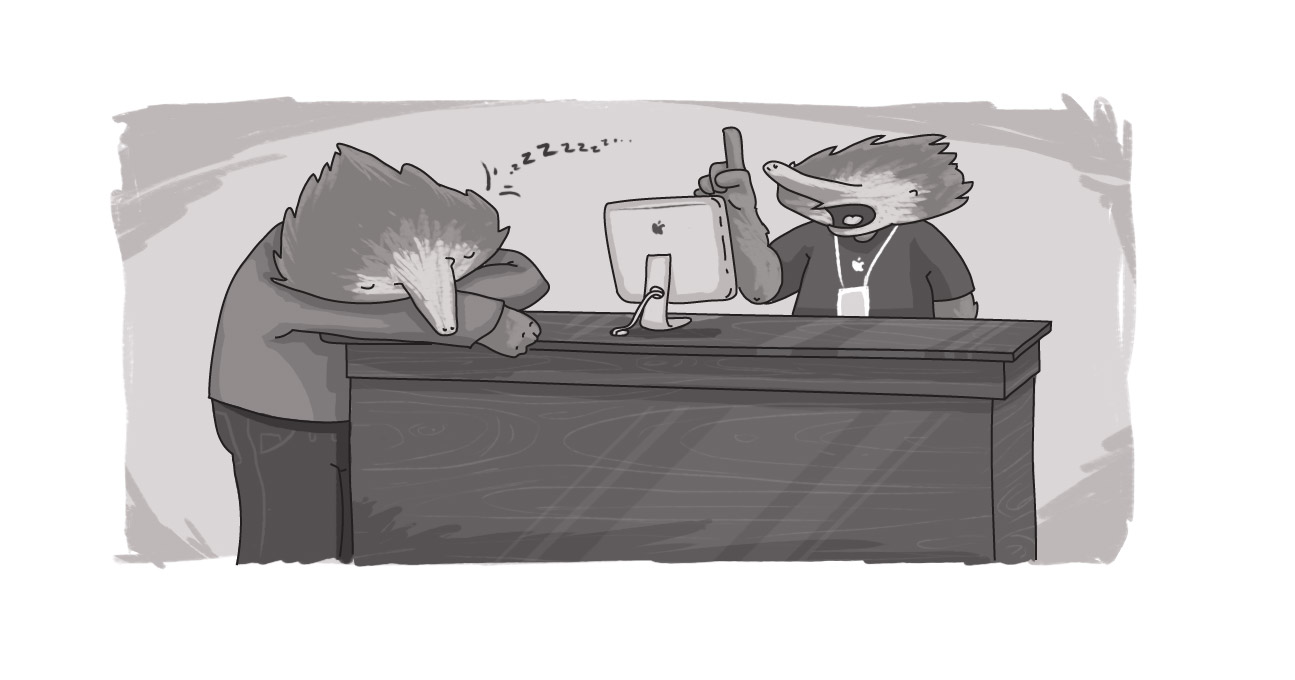Guidelines on Guidelines - Official Does Not Have to Be Ostentatious

Does a document have to be weighty to carry weight? Does the more syllables used in a word add more gravitas to the statement? Or is an abundance of business speak only serving to sink your communications efforts?
When it comes to understanding, adherence, and buy-in from your staff -- less really is more. I've found that there's an inversely proportional relationship between the amount of pages and content you're asking your staff to read, and their interest and support of the cause.
This came up the other day when I was discussing developing social media guidelines with a colleague for an organization. I casually, but not completely jokingly, suggested that a one-liner of "Don't be stupid" would suffice.
Now, obviously that wouldn't work in all environments. Nor was it the be-all-and-end-all of this eventual guideline document. But the simplicity of that message -- the idea of just using common sense -- was front and centre throughout.
I've worked in and with various businesses over the years and it's almost uniform that the larger the business, the more paperwork and documentation is created. Part of it is indemnification; most of it is business-speak bloat.
And it misses the goal of what these guidelines and documents are supposed to do -- provide your staff with an easily recallable road map to make the right decisions.
The great folly of business communications is that many feel that content must be indecipherable or obtusely vague in order to get a message across. That's why we "leverage our core competencies" and "engage in game-changing, value-add paradigm shifts that lets us think outside of the box, hit the ground running, and maximize our return on that low-hanging fruit to increase engagement."
But what is the role of communications, both internal and external? It's to deliver the right message to the right person in the way that's best suited to them. Anything that gets in the way or causes confusion dilutes the effectiveness of your messaging.
So what's wrong with a social media guideline that says things like, "Don't be stupid," "take a walk before you click send on a potentially inflammatory message," "if you've got a queasy feeling in your stomach about a post, maybe you should rethink it," "breathe," "don't lie or tell half-truths," "don't share confidential information," and "Are you speaking for you, or for the company?"
Direct doesn't mean flippant. And I guarantee that your staff will have a better appreciation of the guidelines -- and be able to recall them -- in that format, then by having to read a 10-page document. You can have formal; I'll work towards memorable.
Many years ago, I worked at Price Club. And at the top of the stairs, where our staff room and lockers were located, there was a sign that listed 10 simple guidelines for employees. It was simple, effective, and served to reinforce the customer service guidelines to the employees.
Social media, internal behaviour, customer service, human resources... it doesn't matter what your company's policies are covering, you want to make sure they're read, understood, and easy to follow. So here are my guidelines for effective guidelines:
- Be clear -- Explain exactly what the guidelines are covering and why they're in place. Let people know what's expected of them, where they can have any questions answered, and what the limitations or parameters are.
- Be concise -- Nobody, except your lawyers, want to read 20-page documents that are filled with writers completing verbal gymnastics. Make it short, keep it focused, and ensure the content's easily digestible. The shorter it is, the more likely it's going to be read -- and that's more than half the battle there.
- Be casual -- Sure legalese sounds impressive, but it's also sets up a lot of barriers. Keep it conversational and you'll increase your chances of your internal documents being read and retained. It's not about understanding -- people are smart; it's about retention and recall. If it's casual and relatable, it'll be embraced; if it's pedantic (or, worse, supercilious) then it's going to be glossed over and ignored.
The right message to the right person in the way that best suits them -- that's the key to good communications. And just because something's official that doesn't mean it has to be ostentatious.
Your thoughts? Comments are open.
How do I write official documents?
Can I write casually?
SUBSCRIBE TO OUR E-NEWSLETTER
 Subscribe
Subscribe


